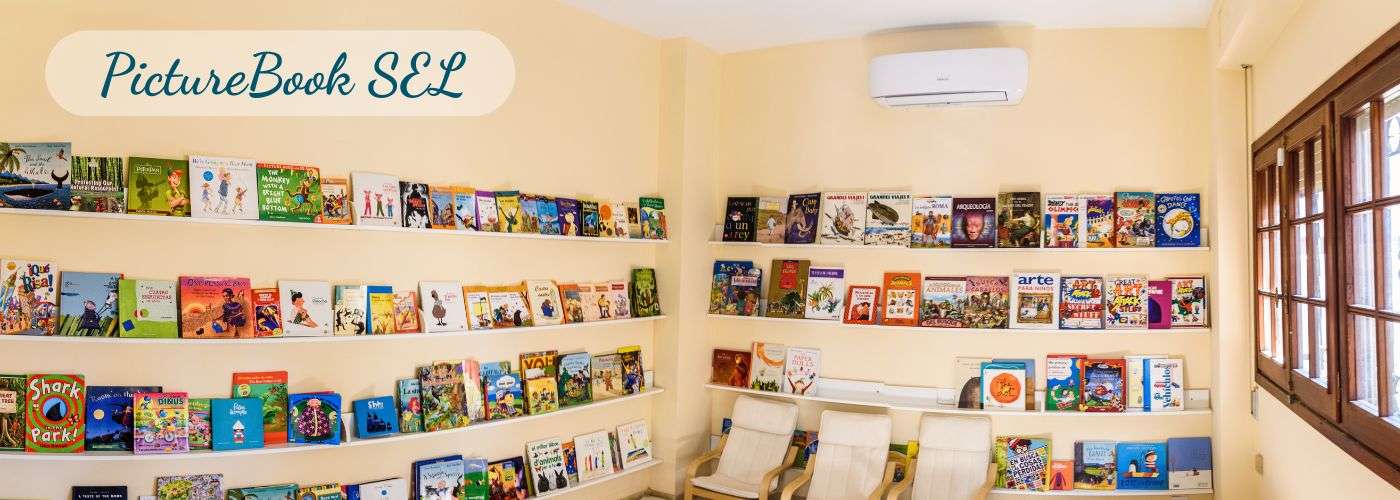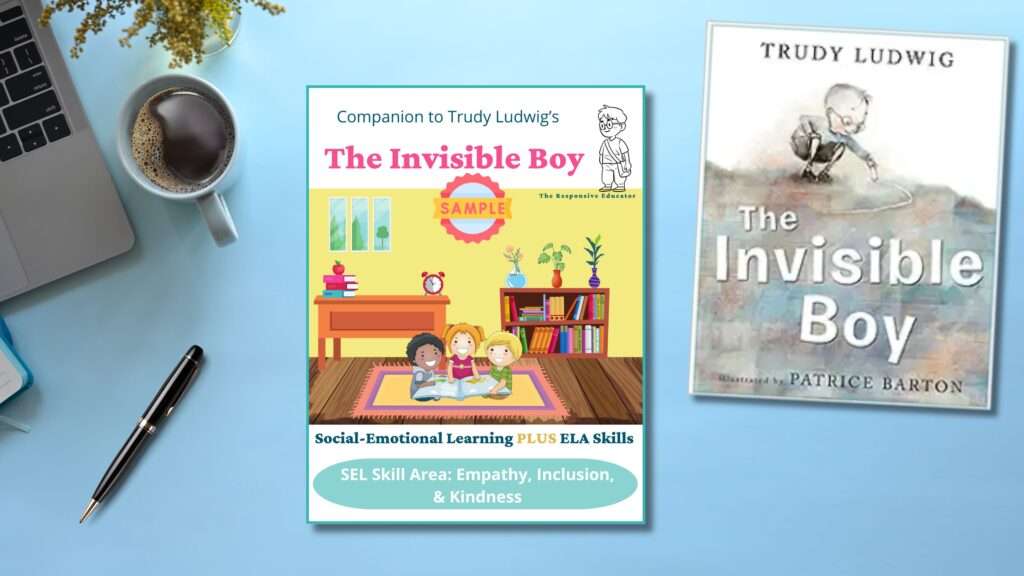


Understanding different perspectives is a crucial skill for children, helping them develop empathy, critical thinking, and stronger relationships. When kids learn to see the world through someone else’s eyes, they become more understanding, compassionate, and open-minded.
The following five perspective books use engaging stories, humor, and thoughtful lessons to show that every story has more than one side. Whether it’s a misunderstood wolf, a wise panda, or a young girl learning to step into someone else’s shoes, these books offer meaningful ways to help children recognize and respect different points of view.
For some of the books on this site, I’ve created interactive read-alouds designed to enrich their use in the classroom. These resources include discussion questions, activities, and prompts that actively engage students and deepen their understanding of key themes. More interactive read-alouds are on the way! If there’s a specific book you’d like to see included, please reach out using the contact form at the bottom of the page.
For more insights on supporting social-emotional learning (SEL) and incorporating interactive read-alouds into your teaching, explore these posts:
(As an Amazon affiliate, I earn a small commission if you purchase products through the links on my posts. Thank you for your support!)
Summary: In this clever and engaging picture book, Fiona Roberton presents a single story from two contrasting perspectives. A little girl discovers a peculiar creature hanging upside down in the woods and “rescues” him, taking him home, feeding him, and trying to care for him. But from the creature’s point of view, he has been kidnapped by a strange big beast who forces him into uncomfortable clothes and imprisons him in a box. When he finally escapes, he realizes he may have left something behind—and returns. This playful narrative twist encourages young readers to consider how different perspectives shape experiences and relationships.
Description: A Tale of Two Beasts is a fantastic resource for teaching perspective-taking, empathy, and understanding. The book is structured into two parts: the first from the girl’s viewpoint and the second from the creature’s, showcasing how the same event can be interpreted in wildly different ways. The whimsical illustrations provide additional depth, subtly hinting at emotions and misunderstandings that enrich discussions about seeing the world through someone else’s eyes. In classrooms, this book is excellent for lessons on point of view, storytelling, and social-emotional learning. The humor and unexpected shifts in narrative make it particularly engaging for early elementary students.
Reviews and Considerations: Readers adore A Tale of Two Beasts for its humor, unique storytelling, and ability to spark meaningful discussions about perspective. Educators and parents find it a valuable tool for teaching children to recognize different viewpoints and to think critically about how actions affect others. Many reviewers highlight its effectiveness in the classroom, where students delight in the shift between narrators and enjoy discovering the details that change between the two versions of events.
A few readers note that the girl’s actions, while well-intentioned, can be seen as overly controlling—offering an additional conversation starter about respect and consent. One reviewer even mentioned having a personal revelation about their own controlling tendencies after reading the book! While one or two readers found the story’s repetition less engaging, most agree that the book’s message and clever execution make it a must-read.

Summary: Miranda Peabody believes she is smarter and more talented than her classmates—and she’s not afraid to let them know it. Frustrated by what she sees as their shortcomings, she can’t understand why they struggle with things that come so easily to her. Her teacher, Mrs. Klemp, challenges her to “stand in their shoes” and see the world from their perspective. Through her journey to understand what this means, Miranda learns a valuable lesson about empathy and how seeing through others’ eyes can change her outlook on the world.
Description: This engaging story teaches children about the importance of empathy—understanding and respecting others’ feelings and experiences. The book’s message is reinforced through discussion questions and activities, including a Shoe Maze and Labeling Some Tools of Understanding, which help children grasp the concept of “walking in someone else’s shoes.” The colorful illustrations and engaging narrative make this book ideal for early elementary students, though some teachers note that older students (grades 1–3) grasp the themes more easily than younger children.
Reviews and Considerations: Educators and parents appreciate How Do I Stand in Your Shoes? for its ability to introduce empathy in a concrete, relatable way. Many find it particularly useful in classrooms, counseling sessions, and character education programs. Teachers have successfully paired it with interactive activities, such as bringing in different types of shoes to help children imagine different perspectives.
However, some reviewers note that the writing style could be more concise and that the illustrations, while expressive, may not appeal to all readers. Additionally, while the book emphasizes the concept of empathy, some wish the term itself was used more frequently to reinforce the lesson.

Summary: Everyone knows the story of the Three Little Pigs—at least, they think they do. But according to Alexander T. Wolf, the whole thing was a big misunderstanding. All he wanted was to borrow a cup of sugar for his granny’s birthday cake, but thanks to a bad cold (and some suspiciously flimsy houses), things quickly got out of hand. Now, he’s been labeled as the “Big Bad Wolf” when, in reality, it was all just a case of bad luck and bad press. This hilarious retelling of a classic fairy tale invites readers to question perspective, bias, and the way stories are told.
Description: A modern classic, The True Story of the 3 Little Pigs flips the traditional fairy tale on its head, presenting the wolf’s version of events with a dry wit and dark humor that appeals to children and adults alike. Lane Smith’s expressive, textured illustrations enhance the satirical tone, reinforcing the book’s theme of unreliable narration. This fractured fairy tale is a fantastic resource for teaching perspective-taking, media literacy, and critical thinking. In the classroom, it pairs perfectly with the original Three Little Pigs story, encouraging students to analyze different viewpoints and consider how narratives can be shaped by bias.
Reviews and Considerations: Readers of all ages love The True Story of the 3 Little Pigs for its humor, clever twist, and engaging illustrations. Teachers and parents frequently use it as a fun way to introduce discussions on perspective and storytelling. Many educators highlight its effectiveness in compare-and-contrast lessons, where students examine both versions of the tale and debate which one seems more believable.
While most reviews are overwhelmingly positive, a few parents note that the book’s dark humor—particularly the idea of the wolf eating two of the pigs—might be unsettling for sensitive readers. However, for children who enjoy a bit of mischief in their stories, this book remains a favorite read-aloud that sparks curiosity and laughter.
With its witty narrative and thought-provoking message, The True Story of the 3 Little Pigs is a must-have for any home or classroom library, proving that every story has more than one side.

Summary: When Michael, Addy, and Karl meet their new neighbor—a giant panda named Stillwater—they don’t expect him to change how they see the world. But through three thought-provoking stories, Stillwater encourages them to consider different perspectives: a poor man shows kindness to a robber, a farmer refuses to judge events as simply good or bad, and a monk teaches the power of letting go. Each tale challenges the children to think beyond their initial reactions, showing them that the way we see things isn’t always the only way.
Description: A Caldecott Honor book, Zen Shorts blends beautiful watercolor illustrations with traditional Zen parables, making abstract ideas accessible to young readers. The book’s structure naturally introduces the concept of multiple perspectives—not just in the Zen stories Stillwater tells, but also in the way each child reacts to his lessons differently. It’s an ideal book for sparking discussions on mindfulness, empathy, and how our viewpoints shape our understanding of the world. Teachers and parents can use it to help children reflect on their own experiences and emotions, encouraging them to consider other perspectives in daily life.
Reviews and Considerations: Readers love Zen Shorts for its stunning artwork and meaningful storytelling. Many parents and teachers find that children return to the book repeatedly, discovering new layers of understanding as they grow. Educators note its effectiveness in fostering discussions about perspective, decision-making, and emotional awareness.
While some young readers may not grasp every lesson immediately, they are still drawn to Stillwater’s wisdom and the gentle, engaging stories. Many parents appreciate how the book helps children learn to pause, reflect, and consider different viewpoints—a skill that extends far beyond the book’s pages.

Summary: Through the experiences of two families, Just Because highlights the value of empathy, giving, and seeing the world from another’s perspective. One family gathers items they no longer need to donate, while another family visits a clothing drive to find essentials. The story encourages children to consider how their actions can impact others and how situations can look different depending on where you stand. With engaging rhymes and whimsical illustrations, this book introduces young readers to the idea that shifting perspective can make us more compassionate and understanding.
Description: Just Because uniquely presents two sides of the same situation. This structure makes it a natural fit for discussions on perspective-taking and empathy. By showing both the giver’s and the receiver’s experiences, the book helps children recognize that kindness and generosity benefit everyone involved. The engaging illustrations and poetic language make it accessible to young readers, while the underlying message provides a meaningful starting point for classroom or family discussions about gratitude, social responsibility, and seeing beyond our own experiences.
Reviews and Considerations: Educators and parents appreciate Just Because for its clear and engaging way of teaching empathy. Many reviewers highlight how the book fosters meaningful conversations with children about giving back and considering how others feel. Teachers find it especially useful for helping students think about social awareness and responsibility.
However, some readers note that the transition between the two perspectives could be clearer, and a few expected a broader take on empathy beyond material giving. That said, most agree that Just Because is a valuable resource for introducing young children to the idea of seeing life from another point of view.



Sign up now to receive a free sample of “The Invisible Boy” Interactive Read-Aloud Lesson Plan! This comprehensive resource includes engaging activities designed to help your students develop empathy and inclusion.
By signing up, you will also join our newsletter, where you’ll receive:
Join our community of educators dedicated to fostering social-emotional growth in the classroom!

( ) = Coming Soon
Body Safety & Personal Boundaries
(Conflict Resolution)
(Compromise / Cooperating)
Feelings & Emotional Awareness
(Sensory Processing)
(Sharing)
(Speaking Politely)
(Teasing & Bullying)
(Trauma Recovery)